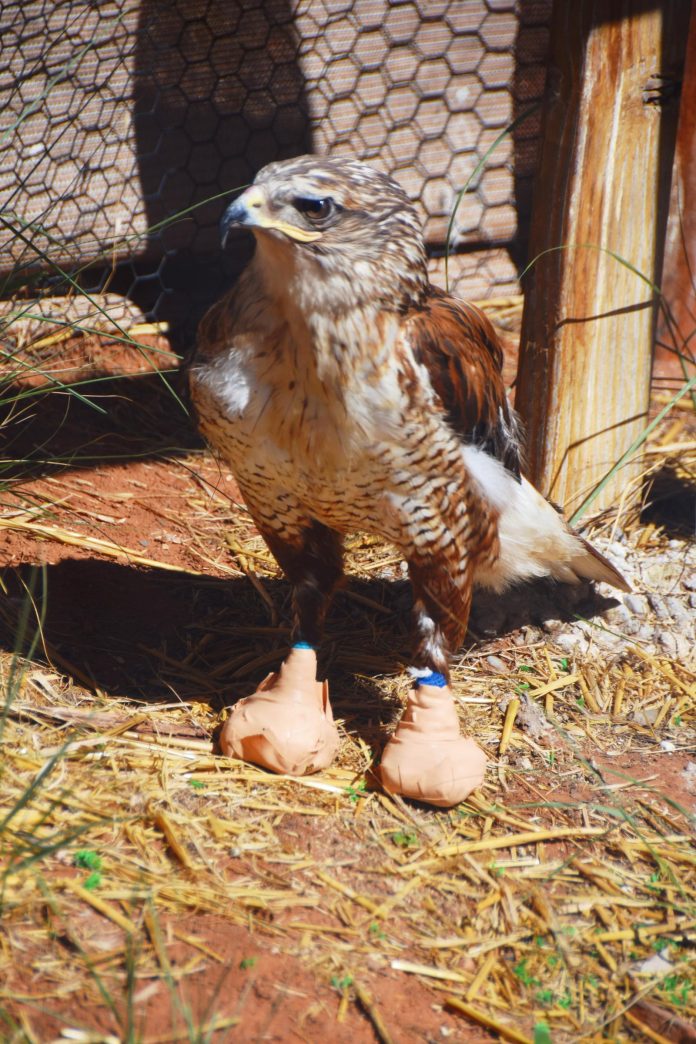Wildlife is at every turn in Northern Arizona. Not a day seems to go by absent of encounters with javelina, coyotes, deer, birds of prey and an abundance of smaller animals.
Living in such close proximity to wildlife comes with a toll for our untamed neighbors, though. Most of us only see the signs of those that didn’t make it — roadkill and the occasional bird that flew into a window — but there are many animals who become injured, abandoned or otherwise incapacitated in the process of interacting with humans or other animals.
That’s where Bill Harvey comes in. In 2010, he founded Runnin’ W Wildlife Center and started providing recovery for not only the native wildlife of Northern Arizona but many other animals in distress that happen to cross his path. State and federally licensed, he also provides training courses in the care of native animals and the opportunity to be a sub-permittee.
Located on a two-acre plot of land adjacent to Oak Creek in Cornville, Runnin’ W takes most everything, from hummingbirds to coyotes and bobcats. It boasts more permits than multi-million-dollar attractions such as Out of Africa and Bearizona, operating 24-7 as the only wildlife recovery, holding and release facility of its kind in Northern Arizona.
“At any given time in the summer, we have over 200 intakes,” Harvey said, adding that animals come from all over Northern Arizona. In compliance with Arizona state law, however, Runnin’ W does not admit deer of any kind. By preference, the facility does not admit skunks.
Harvey said that many people are unaware of Runnin’ W’s existence. “Then again,” he added, “when they need our help, we’re here.”
Runnin’ W is not an attraction, but tours can be arranged. According to Harvey, the facility provides an “environmental and educational platform for schools and small tours, and our main goal is to create a living classroom that covers the environmental sciences as well as stewardship. Visitors will better understand and be able to live with the natural world, as well as assist the misplaced, injured and orphaned animals in Northern Arizona.
“We are a 501(c)(3) nonprofit with lofty goals for our community. From providing training through internships to networking with other qualified recovery people in the area, we hope to create a large impact and fill the need for animal preservation.”
According to Harvey, at the facility children and their families have an opportunity to learn about wildlife in the perfect environment: Gardens planted with native vegetables and fruit. In addition, environmental sciences and technologies are displayed through applications such as solar and rain water collection.
After over half a decade at the task, Harvey has seen a bit of it all when it comes to wounded and abandoned animals. Nonetheless, the call he received two years ago stunned even him.
“When somebody calls you about a pelican in Arizona, you just think he doesn’t know what he’s talking about,” Harvey said, but added that he had to eat his words when a man showed up with a giant white pelican. Probably blown off course as it made its journey from Utah to Southern California, the animal recovered in short time. Its release was delayed slightly while Harvey searched for another group of pelicans, but when he found a group near Lake Pleasant the large bird was released.
Harvey admitted that maintaining so many animals can be a challenge — one that begins at 4 a.m. and ends after nightfall — but the real challenges are making it all work on a shoestring budget.
“We incur the debt. We don’t charge or elicit services. The burden of the responsibility is solely on my shoulders,” Harvey said, adding that he receives no funding from the state or federal government; everything comes from grants and private donations.
Regardless of the challenge, Harvey said that he is committed to providing wild animals a chance at freedom.
And if not freedom, then at least a good life.
“Those that can’t be rehabilitated are found permanent homes.”



